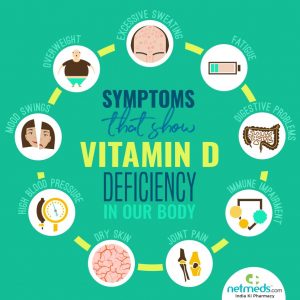What is vitamin D?
The “sunshine” is source of vitamin D in warm weather. It’s shocking for the majority of people when they have never had trouble before and think nothing has altered to make it an issue now. The truth is that a great deal has transformed, as well as vitamin D deficiency as well symptoms of low vitamin d, is now a global public health problem influencing approximated 1 billion individuals worldwide.
Vitamins are considered crucial nutrients because either your body can not make them or they are made in inadequate total up to avoid unfavorable health repercussions or illness. So you must offer vitamins for your body by food and supplements.

Vitamin D was found to be important when it was located to be needed for the therapy of rickets. Vitamin D is just one of the four fat-soluble vitamins (A, D, E, and also K). There are two types of vitamin D: D2 and D3. Vitamin D2, likewise referred to as ergocalciferol, originates from fortified foods, plant foods, and over-the-counter supplements. Vitamin D3, also called cholecalciferol, originates from fortified foods, animal foods (fatty fish, cod liver oil, eggs, and liver), supplements, and also can be made inside when your skin is exposed to ultraviolet (UV) radiation from the sun.
The main dangers of excessive exposure to the sunlight and also skin cancer have been considerably publicized as well as caused individuals covering up as well as utilizing sunblock when in the sun. We have additionally had a change in spending much less time outdoors due to enhanced work hours and also less active lives.
Therefore, vitamin D degrees started dropping without a lot of healthcare professionals understanding it. Researchers have been concentrating on the consequences of vitamin D shortage as well as have found an alarming variety of health issues outside of its function with rickets.
These consist of skeletal conditions like osteoporosis, particular cancers, cardiovascular disease, autoimmune illness, infections, inflammatory digestive tract conditions, psychological disorders, cognitive problems, obesity, and or death. Correcting vitamin D deficiency is not as easy as taking a tablet or obtaining more sunlight. This short article will certainly show you all that you require to learn about the advantages of achieving as well as maintaining optimal vitamin D degrees as well as just how you can do it.
What are the vitamin D requirements?
Just 20% of our vitamin D is suggested ahead from our diet plan, with the continuing to be 80% provided by our skin from UV-B direct exposure to the sunlight. There are presently two sets of standards for vitamin D intake.
Commonly, vitamin standards are established by the Institute of Medication (IOM) in the form of Advised Dietary Allocations (RDA) or sufficient consumption (AI). The RDA is the typical everyday intake adequate to satisfy the nutrient requirements of nearly all (97.5%), healthy people.
These standards were set on a populace model to avoid vitamin D deficiency based on bone wellness (osteomalacia, rickets, bone mineral thickness, as well as calcium absorption) for the primary population.
What You Need to Know About Vitamin D Deficiency
From maintaining bones strong to supporting muscles and nerves to aiding the immune system, vitamin D (also known as the ‘sunshine vitamin’) is a critical player in maintaining your wellness.
Researchers are likewise considering possible links between vitamin D shortage (low degrees of vitamin D) and other wellness problems such as cancer cells, kind one diabetes, cardiovascular disease, and also several sclerosis, among others. As well as yet, about 25% of grown-up guys, as well as 35% of adult females in the UNITED STATE, are deficient in vitamin D.
What are causes low vitamin D levels?
Vitamin D deficiency can be triggered by several points, consisting of:
- Not obtaining adequate vitamin D in your diet plan. Keep in mind that really couple of foods naturally include vitamin D besides vitamin D-fortified foods (such as milk, morning meal cereals, and orange juice), so it can be hard to rely on your diet plan to obtain sufficient vitamin D.
- Not obtaining enough direct sunlight exposure, because vitamin D is created in the body when your skin is straight subjected to the sun. Still, dermatologists advise using sunscreen and also obtaining vitamin D from food as well as supplements to avoid the unsafe results from the sun’s ultraviolet rays.
- The body could not absorb vitamin D from foods.
- The liver or kidneys not being able to transform vitamin D to its active type in the body.
- Taking medications that impact vitamin D metabolic process (e.g., steroids, particular anti-seizure medicines, HIV/AIDS medicines).
Vitamin D deficiency
Additionally, the following groups are at higher causes and symptoms of low vitamin d:
- In adults, because the skin becomes less efficient in generating vitamin D with age, as well as the kidneys, are much less able to transform vitamin D right into its active type.
- Individuals that are obese or who have undergone stomach bypass surgery. In obese people, body fat binds to some vitamin D and stops it from reaching the blood. In those who have had a gastric coronary bypass, food or supplements bypass a section of the small intestine, decreasing the capacity to absorb vitamins, including vitamin D.
- Breastfed infants, since human milk may not include sufficient vitamin D to fulfill infant requirements.
- Individuals that have dark skin because darker skin is less able to create vitamin D from sunlight contrasted to those with lighter skin.
- Those that have particular conditions such as Crohn’s disease or celiac disease, because the gut has a lowered capacity to absorb fat from food. Note: vitamin D is a fat-soluble vitamin.
What are the signs and symptoms of low vitamin d?
Lots of people with vitamin D deficiency do not experience symptoms until their vitamin D degrees obtain extremely low. Several of the indicators or symptoms of vitamin D deficiency may consist of:
- Back or joint pain.
- Muscle weakness.
- Being worn out.
- Mood swings
- Anxiety.
- Troubles are dropping off to sleep or remaining asleep.
- Headache.
- Loss of hair.
Difficulties of an extreme vitamin D shortage (called rickets in youngsters and also osteomalacia in adults) can happen. These conditions can create soft and weak bones and also bring about bone fractures, muscular tissue weakness, bone discomfort, as well as even irreversible bone deformities, if left without treatment.
What should I do if I think I’m vitamin D-deficient??
Your doctor can order a blood test, which can determine whether you have a vitamin D shortage. If you have low degrees of vitamin D as well as need to take a vitamin D supplement, ask your medical professional or pharmacist concerning how much you require. The amount of vitamin D you should need daily relies on variables such as your age, if you are expecting or breastfeeding (for females), and if you go to high risk for a vitamin D deficiency.
Additionally, keep in mind that while uncommon, it is feasible to have too much vitamin D in your body, usually from taking high dosages of vitamin D supplements. Indications of excess vitamin D include queasiness, throwing up, reduced hunger, feeling weak, confusion, as well as heart as well as kidney troubles. Talk with your doctor before taking a vitamin D supplement.
What is the treatment for a vitamin D deficiency?
The amount of vitamin D that is required to deal with a shortage will depend on the extent of the deficiency and your specific clinical conditions. The time of year will likewise influence your demands.
As an example, if you get on the reduced end of appropriate blood degrees and heading into the winter season, you would undoubtedly require a little bit more than if you were heading into the summer months if you spend time out in the sunlight. The objective for every person is to get your stores to a secure level and prevent them from dropping with an upkeep strategy.
Vitamin D3 has been revealed to be the best option for supplements. Vitamin D2 supplements do not increase your levels the same amount as D3 and, sometimes, they have been shown to reduce levels over long-lasting use. Natural resources of vitamin D2 are limited, and most of the study has been done making use of D3 supplements.

